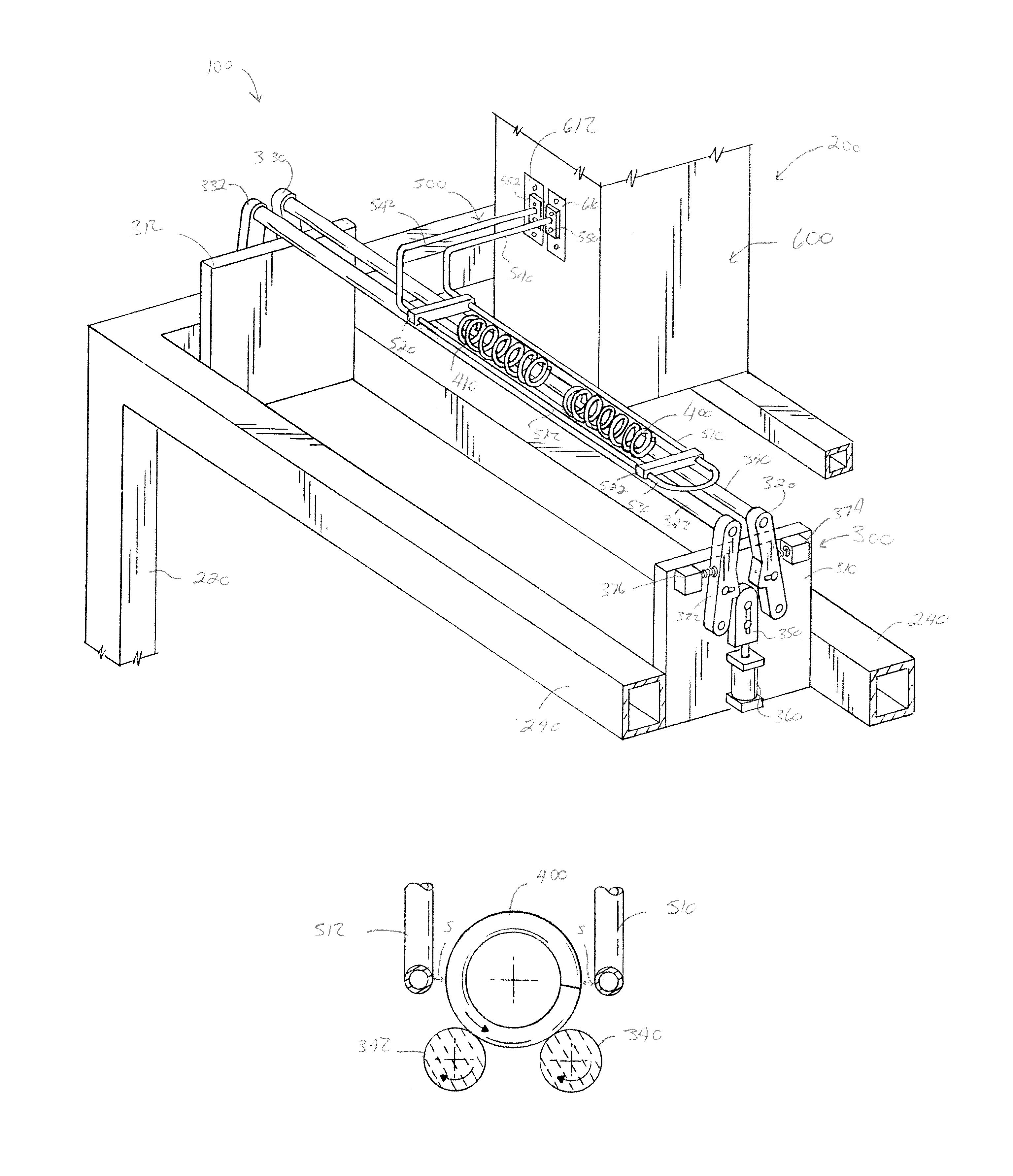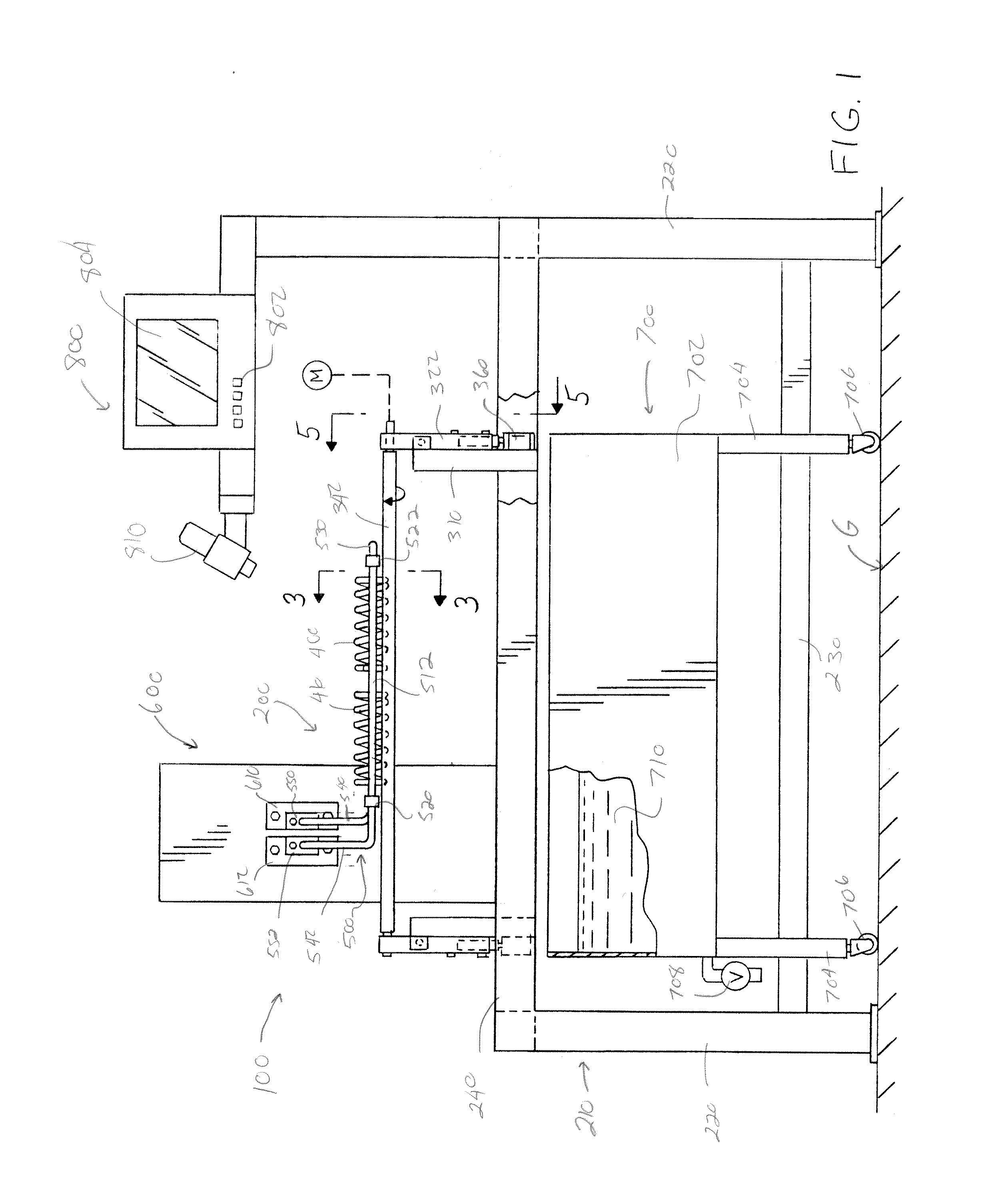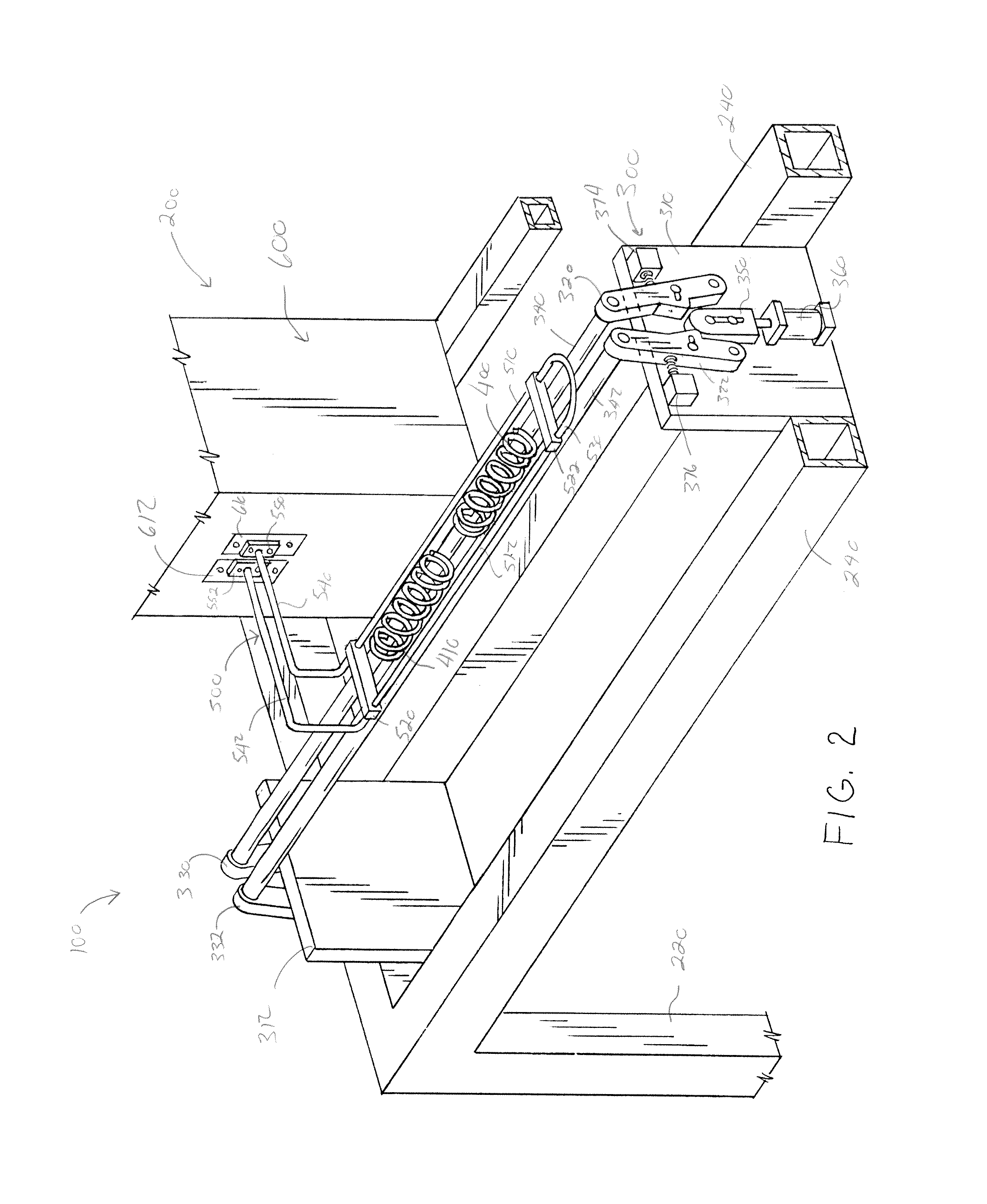Induction heating of springs
a technology of induction heating and springs, which is applied in the direction of heat treatment apparatus, furnaces, shock absorbers, etc., can solve the problems of adversely altering the micro-structure of the spring, overheating the end portions of the spring, etc., and achieves the effect of shortening the time duration
- Summary
- Abstract
- Description
- Claims
- Application Information
AI Technical Summary
Benefits of technology
Problems solved by technology
Method used
Image
Examples
Embodiment Construction
[0051]Referring now to the drawings wherein the showings are for the purpose of illustrating non-limiting embodiments of the invention only and not for the purpose of limiting same, FIGS. 1-6 illustrate one non-limiting processing arrangement 100 for heating and hardening a spring in accordance with the present invention. Processing arrangement 100 is illustrated as a batch process for heating and hardening one or more springs. As can be appreciated, processing arrangement 100 can be configured to heat and harden springs by a continuous non-batch process; however, this is not required. The springs that are heated and hardened by processing arrangement 100 are typically helical or beehive springs and the invention will be described with particular reference to such springs; however, it can be appreciated that other types of springs can be heated and hardened. As can also be appreciated, metal rods or tubes having a generally circular cross-section shape can also be heated and hardene...
PUM
| Property | Measurement | Unit |
|---|---|---|
| shape | aaaaa | aaaaa |
| electrically conductive | aaaaa | aaaaa |
| rotation speed | aaaaa | aaaaa |
Abstract
Description
Claims
Application Information
 Login to View More
Login to View More - R&D
- Intellectual Property
- Life Sciences
- Materials
- Tech Scout
- Unparalleled Data Quality
- Higher Quality Content
- 60% Fewer Hallucinations
Browse by: Latest US Patents, China's latest patents, Technical Efficacy Thesaurus, Application Domain, Technology Topic, Popular Technical Reports.
© 2025 PatSnap. All rights reserved.Legal|Privacy policy|Modern Slavery Act Transparency Statement|Sitemap|About US| Contact US: help@patsnap.com



